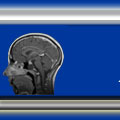




Optical Imaging
| There are other techniques that have potential application for clinical and intraoperative imaging. Among those is optical imaging--such as diffuse optical tomography. These systems have several advantages. First, they are relatively cheap. Second, they use non-ionizing near-infrared light for imaging. Third, there are no compatibility problems with tools. Fourth, they are typically much smaller than MR or CT systems. Fifth, optical imaging techniques can provide functional information without the use of contrast agents, unlike MRI and CT. |  |
| The most obvious drawback of these systems is that they haven't been well developed at this point. They are also mostly limited to extremity imaging, rather than whole-body imaging. Additionally, they are typically limited in their resolution. A surgeon may be more interested in detailed structural information rather than low-resolution functional information. The most useful application of optical imaging techniques would be in conjunction with another, higher-resolution imaging modality such as MRI or CT. | |
Other Techniques There are many other imaging modalities that have been used or proposed for intraoperative use, such as laser systems, endoscopic systems, and many others. The diversity of systems is beyond the scope of this review. Suffice it to say that the list included in this review is not all-inclusive.
|
|
Sources:
Website created by: David Thayer, last edited: May 29, 2006